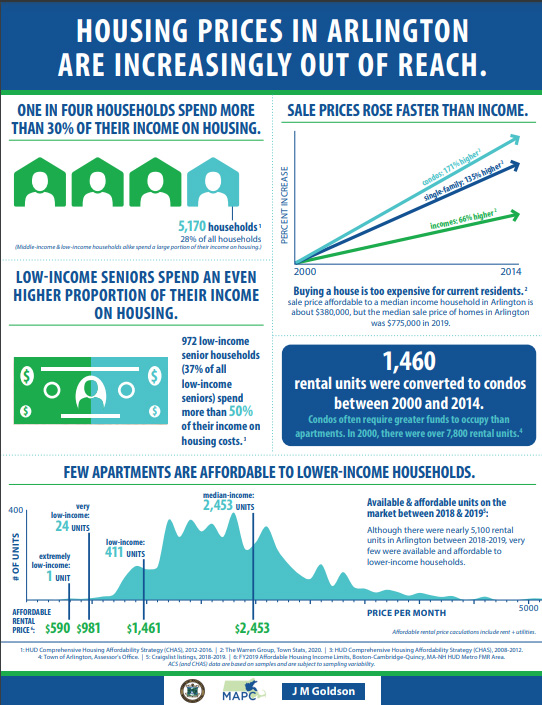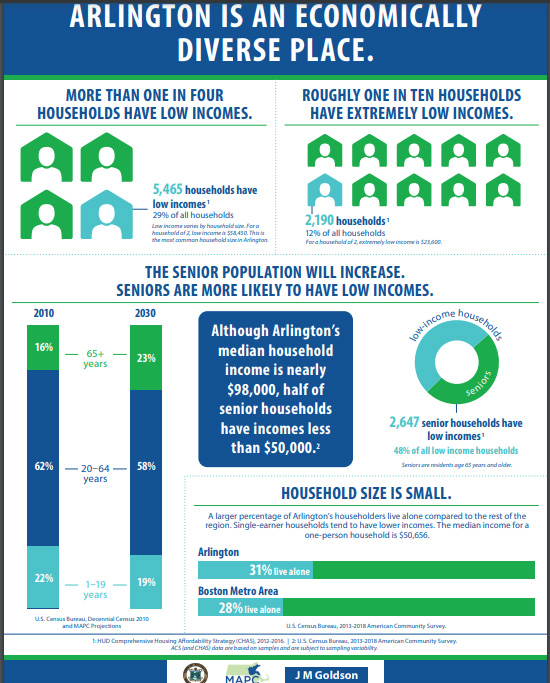Massachusetts' 2020 Economic Development Bill included a set of housing choice provisions: these require communities served by the MBTA to provide a district of reasonable size where multi-family housing is allowed by right. The law gives us significant flexibility to design a district that best suits our needs, but the district must allow housing suitable for families with children, without age restrictions, and at a rate of at least 15 dwellings per acre. Arlington is one of 175 MBTA communities in Massachusetts that share in the responsibility for meeting these requirements.
2021 set records in Boston housing market.
Arlington is in the process of update the town’s 2016 Housing Production Plan, and the Housing Plan Implementation Committee and Planning Department have put together a “meeting in a box” as part of their outreach efforts. The idea is to package a set of discussion questions and supplementary materials, so that groups can talk through the questions on their own and provide written feedback. Meeting in a box materials are available from the town website.
An ADU is a separate, smaller living unit with its own kitchen and bathroom facilities and separate entrance that is included within a larger resident (type 1), attached to a residence (type 2) or located in an accessory (“detached”) structure on the same lot as a main residence (type 3). For a variety of reasons, primarily cost and feasibility, the type 1 ADUs are by far the most common.
Beginning last July, 2020, the Town of Arlington and community groups in the town are sponsoring a number of webinars and zoom conversations addressing the need for affordable housing programs in Arlington. Several factors contribute to the Arlington housing situation: diversity of housing types, prices, diversity of incomes, availability of housing subsidies, rapid growth in property values that greatly exceed the rate of growth of income.
This is our national challenge for the next 25 years, according to Jeffrey C. Fuhrer, Executive Vice President/Chief Strategy Officer for MassDevelopment, the Commonwealth’s economic development and finance authority.


Accessory Dwelling Units (aka “granny flats”)
Arlington has an opportunity to set up an Affordable Housing Trust Fund to provide more housing stability for its low and moderate income residents. The vote will occur in the Town Meeting starting Nov. 16, 2020.
A Guide for Arlington
The Massachusetts Housing Partnership put together this 2018 guidebook, v.3, to help municipalities adopt Municipal Affordable Housing Trust Fund (MAHT) legislation to suit the specific needs of each municipality.